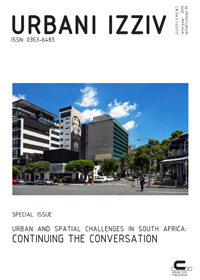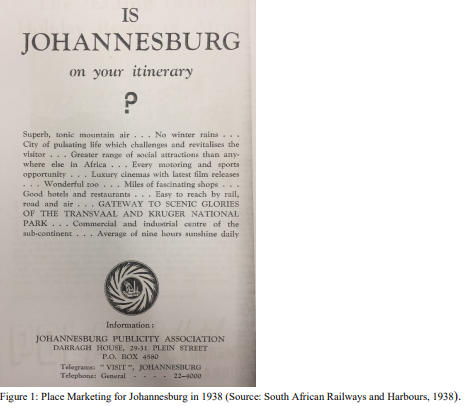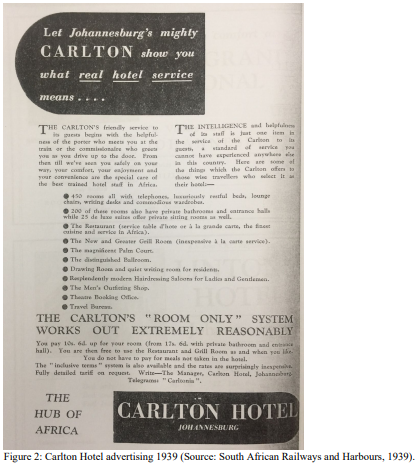 Kazalo
Kazalo
Slike

Slika 1: Place Marketing for Johannesburg in 1938 (Source: South African Railways and Harbours, 1938)

Slika 2: Carlton Hotel advertising 1939 (Source: South African Railways and Harbours, 1939)
Urbani izziv Leto 30, št. supplement, februar 2019
: 112-128
(Članki)
doi: 10.5379/urbani-izziv-en-2019-30-supplement-008
Avtor
Christian M. ROGERSON
School of Tourism and Hospitality, University of Johannesburg, South Africa
crogerson@uj.ac.za
Jayne M. ROGERSON
School of Tourism & Hospitality, College of Business and Economics University of Johannesburg, Johannesburg, South Africa
jayner@uj.ac.za
Naslov članka
Historical urban tourism: Developmental challenges in
Johannesburg 1920-1950
Povzetek
Over the past decade there has been considerable growth and maturation of research concerning contemporary
urban tourism. Tourism in major cities is not a new phenomenon rather it has existed from the earliest times of
civilization following the birth of cities. The historical development of cities as tourist destinations has remained
little investigated as urban tourism research is overwhelmingly ‘present-minded’. This paper addresses the neglect
of historical studies in urban tourism. Using archival sources an investigation is undertaken of the early
development of tourism in Johannesburg, South Africa’s largest city, which evolved from a gold mining camp
established in 1886. The analysis focuses on the period from 1920 when the first tourism promotional activities
were initiated to 1950 when national government enacted the Group Areas Act which began the radical reshaping
of tourism in South Africa under the influence of apartheid legislation. In the formative years of urban tourism in
Johannesburg between 1920 and 1950 two key overarching challenges are identified. These are the challenges of
identifying and promoting the city’s tourism assets and of the building of a competitive infrastructure for tourism
development, most notably in terms of the hotel accommodation sector.
Ključne besede
urban tourism, historical urban tourism, tourism infrastructure, Johannesburg, South Africa